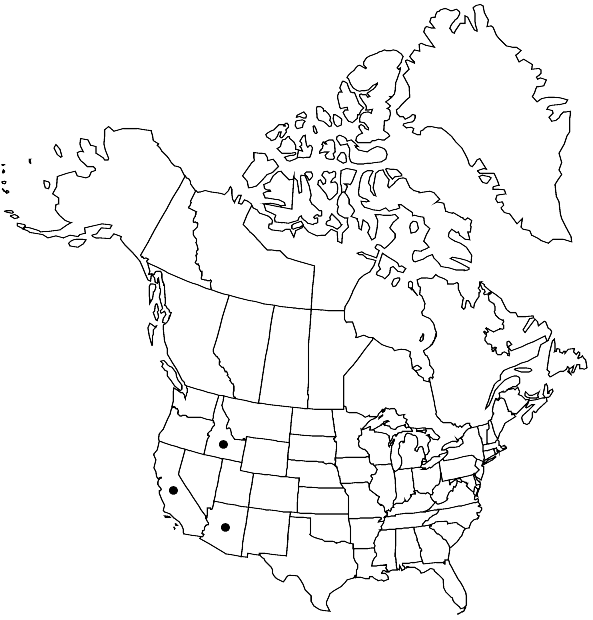Difference between revisions of "Aloina bifrons"
Bryologist 76: 273. 1973,.
FNA>Volume Importer |
FNA>Volume Importer |
Revision as of 19:41, 24 September 2019
Plants to 3 mm. Leaves lingulate to ovate-lingulate, 1–2.5 mm, margins entire to serrulate, undifferentiated at base, apex piliferous, open, broadly obtuse or rounded; costa undifferentiated, with few or no stereid cells, filaments of 4–8 cells, cells subspheric to cylindric; cells of leaf base 18–37 µm, medial and distal cells 9–22 µm, papillae none. Sexual condition dioicous. Seta 6–14 mm. Capsule urn cylindric to ovoid cylindric, 1.7–3.2 mm; operculum conical, rostrate, erect or slightly inclined, 0.9–1.4 mm; peristome 800–1230 µm, strongly twisted; spores 9–24 µm.
Phenology: Capsules mature Jan–Jul(-Aug).
Habitat: Sunny sandy soil or soil over limestone in dry areas
Elevation: moderate elevations (300-800 m)
Distribution

Ariz., Calif., Idaho, Mexico (Baja California, San Luis Potosí, Nuevo León, Puebla and Zacatecas), s South America, s Europe, sw Asia (Jordan), Africa (Egypt, South Africa), Pacific Islands (New Zealand), Australia.
Discussion
Aloina bifrons is readily identified by the hyaline hair of the leaf apex and the poorly developed costa that is only evident toward the leaf base, but inconspicuous in the distal half of the leaf. No other North American species of the genus exhibits a piliferous leaf apex.
Selected References
None.